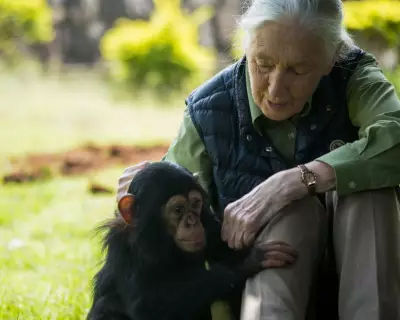
In an extraordinary conservation effort that combined mountaineering skills with botanical expertise, two daring horticulturists recently performed a high-stakes rescue mission to save one of Britain's most endangered trees from vanishing forever.
The Cliffside Emergency
Perched precariously on a steep cliff face in a secret London location, a critically endangered tree species clung to survival. The specimen, whose exact identity remains confidential for security reasons, represented one of the last of its kind in the United Kingdom. With the tree showing signs of decline and its position making conventional access impossible, time was running out to secure its genetic future.
Mission Impossible: Botanical Style
Enter Tom Davis and Raquel Pena, two specialist horticulturists from the world-renowned Royal Botanic Gardens, Kew. Donning climbing harnesses and armed with botanical collection equipment, they embarked on what can only be described as a horticultural mission impossible.
"We had one chance to get this right," explained Davis. "The tree was in a location that made every movement challenging. We weren't just abseiling down a cliff - we were trying to carefully collect precious reproductive material while suspended in mid-air."
The Prize: Tiny Gumnuts with Massive Importance
The target of their aerial mission were gumnuts - the woody seed pods that contain the tree's future generations. These small, unassuming botanical treasures hold the key to preserving the genetic diversity of a species teetering on the brink of extinction.
Pena described the careful process: "Each gumnut had to be collected with surgical precision. Too much pressure and we could damage them, but we also had to work quickly and efficiently given our challenging position."
Why This Rescue Matters
This dramatic rescue represents more than just saving one tree. Conservation experts emphasize that such missions are critical for several reasons:
- Preventing permanent loss of genetic diversity
- Maintaining ecosystem balance
- Preserving potentially undiscovered medicinal or ecological benefits
- Protecting Britain's natural heritage for future generations
From Cliff Face to Conservation Future
The successfully collected gumnuts are now safely housed in Kew's Millennium Seed Bank, one of the most sophisticated conservation facilities in the world. Here, they'll be preserved under strict conditions, ensuring that even if the parent tree doesn't survive, its genetic legacy will endure.
This mission highlights the increasingly creative and daring approaches required in modern conservation, where the fight to protect biodiversity often requires thinking far outside the conventional toolbox.
As climate change and habitat loss accelerate the decline of species worldwide, such high-stakes botanical rescues may become more common - a testament to the extraordinary lengths conservationists will go to protect our planet's precious flora.





